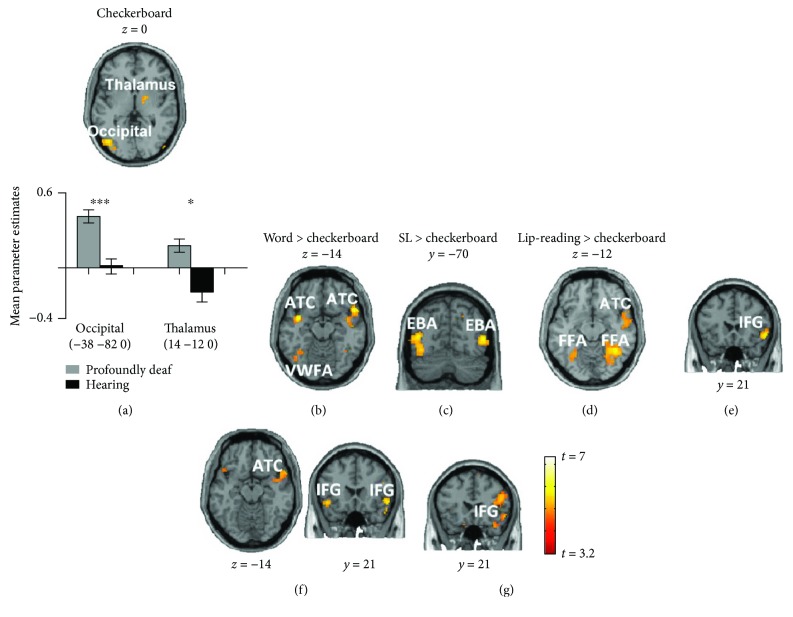Figure 4.
Differences in functional connectivity of the superior temporal cortex (STC) between the profoundly deaf and the hearing groups and between the checkerboard and the language conditions. Brain slices depicting the significant differences in functional connectivity between the profoundly deaf and the hearing groups (p < 0.001, FDR p < 0.05 corrected) with the seed region set in the right STC. For the checkerboard stimulus (a), significantly enhanced functional connectivity between profoundly deaf and hearing subjects was found in the left occipital cortex and right thalamus. In comparison with the checkerboard (whole brain, p < 0.001, FDR p < 0.05 corrected), for the word condition (b, e), greater connectivity was shown in the visual word form area, bilateral anterior temporal cortex, and right inferior frontal gyrus. For sign language (c, f), the bilateral extrastriate body area, right ATC, the bilateral FFA, and the bilateral IFG were identified as having strong functional connectivity with the right STC. For lip-reading stimuli (d, g), the bilateral FFA, right ATC and right IFG showed higher functional connectivity with the right STC. Asterisks denote a significant difference between the profoundly deaf group and the hearing group. Error bars indicate 1 standard error. ∗∗∗ p < 0.001 and ∗ p < 0.05.

